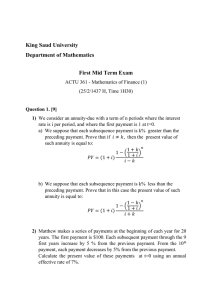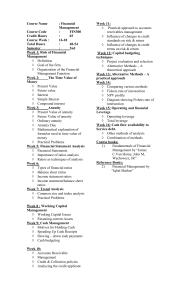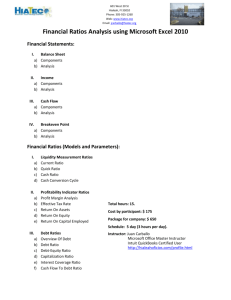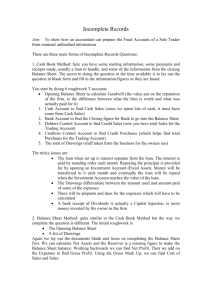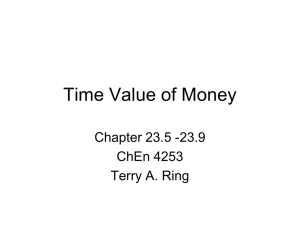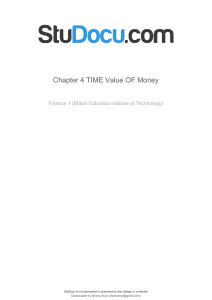Principles of Finance Review Sheet—Exam 1
advertisement
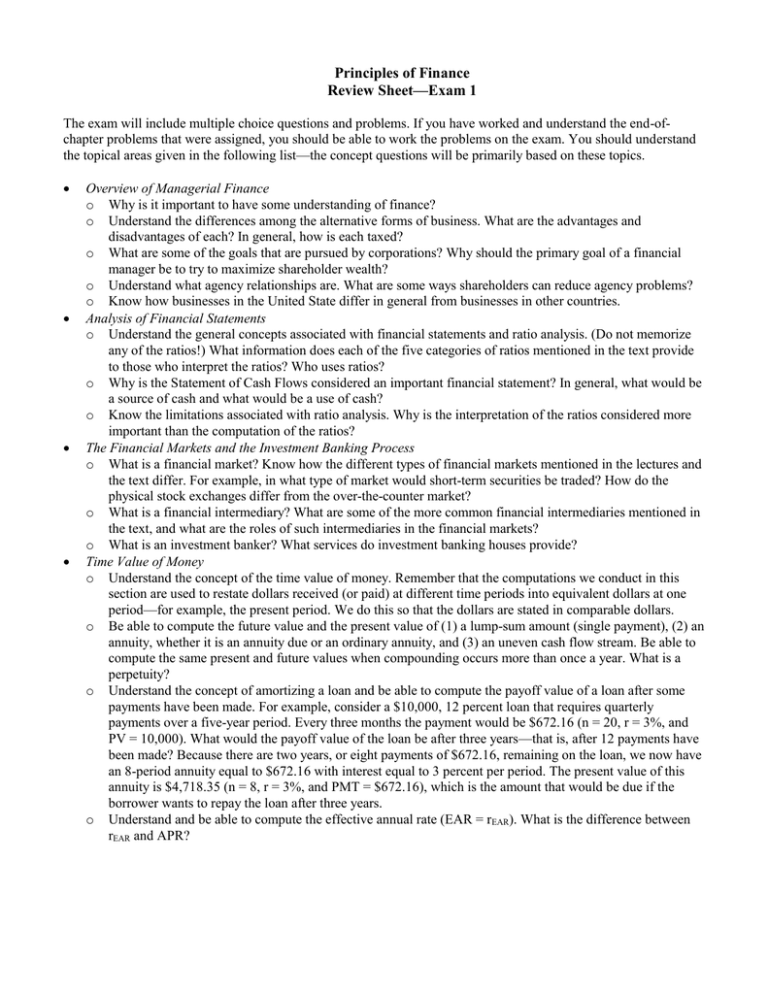
Principles of Finance Review Sheet—Exam 1 The exam will include multiple choice questions and problems. If you have worked and understand the end-ofchapter problems that were assigned, you should be able to work the problems on the exam. You should understand the topical areas given in the following list—the concept questions will be primarily based on these topics. Overview of Managerial Finance o Why is it important to have some understanding of finance? o Understand the differences among the alternative forms of business. What are the advantages and disadvantages of each? In general, how is each taxed? o What are some of the goals that are pursued by corporations? Why should the primary goal of a financial manager be to try to maximize shareholder wealth? o Understand what agency relationships are. What are some ways shareholders can reduce agency problems? o Know how businesses in the United State differ in general from businesses in other countries. Analysis of Financial Statements o Understand the general concepts associated with financial statements and ratio analysis. (Do not memorize any of the ratios!) What information does each of the five categories of ratios mentioned in the text provide to those who interpret the ratios? Who uses ratios? o Why is the Statement of Cash Flows considered an important financial statement? In general, what would be a source of cash and what would be a use of cash? o Know the limitations associated with ratio analysis. Why is the interpretation of the ratios considered more important than the computation of the ratios? The Financial Markets and the Investment Banking Process o What is a financial market? Know how the different types of financial markets mentioned in the lectures and the text differ. For example, in what type of market would short-term securities be traded? How do the physical stock exchanges differ from the over-the-counter market? o What is a financial intermediary? What are some of the more common financial intermediaries mentioned in the text, and what are the roles of such intermediaries in the financial markets? o What is an investment banker? What services do investment banking houses provide? Time Value of Money o Understand the concept of the time value of money. Remember that the computations we conduct in this section are used to restate dollars received (or paid) at different time periods into equivalent dollars at one period—for example, the present period. We do this so that the dollars are stated in comparable dollars. o Be able to compute the future value and the present value of (1) a lump-sum amount (single payment), (2) an annuity, whether it is an annuity due or an ordinary annuity, and (3) an uneven cash flow stream. Be able to compute the same present and future values when compounding occurs more than once a year. What is a perpetuity? o Understand the concept of amortizing a loan and be able to compute the payoff value of a loan after some payments have been made. For example, consider a $10,000, 12 percent loan that requires quarterly payments over a five-year period. Every three months the payment would be $672.16 (n = 20, r = 3%, and PV = 10,000). What would the payoff value of the loan be after three years—that is, after 12 payments have been made? Because there are two years, or eight payments of $672.16, remaining on the loan, we now have an 8-period annuity equal to $672.16 with interest equal to 3 percent per period. The present value of this annuity is $4,718.35 (n = 8, r = 3%, and PMT = $672.16), which is the amount that would be due if the borrower wants to repay the loan after three years. o Understand and be able to compute the effective annual rate (EAR = rEAR). What is the difference between rEAR and APR?
